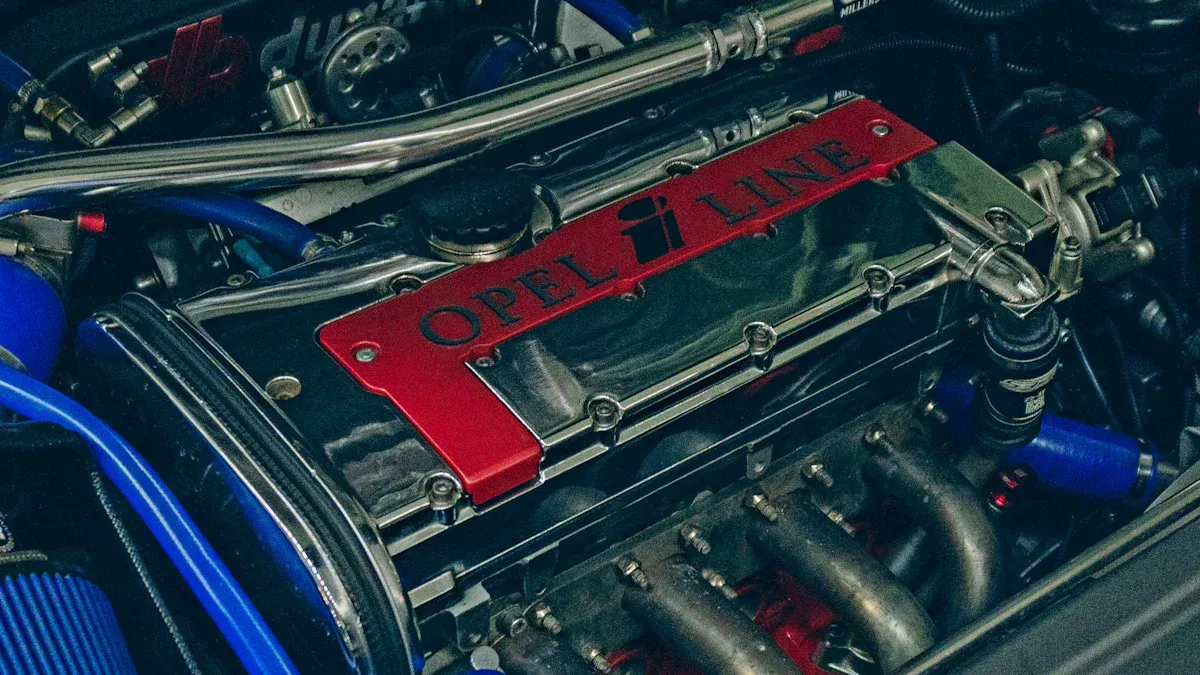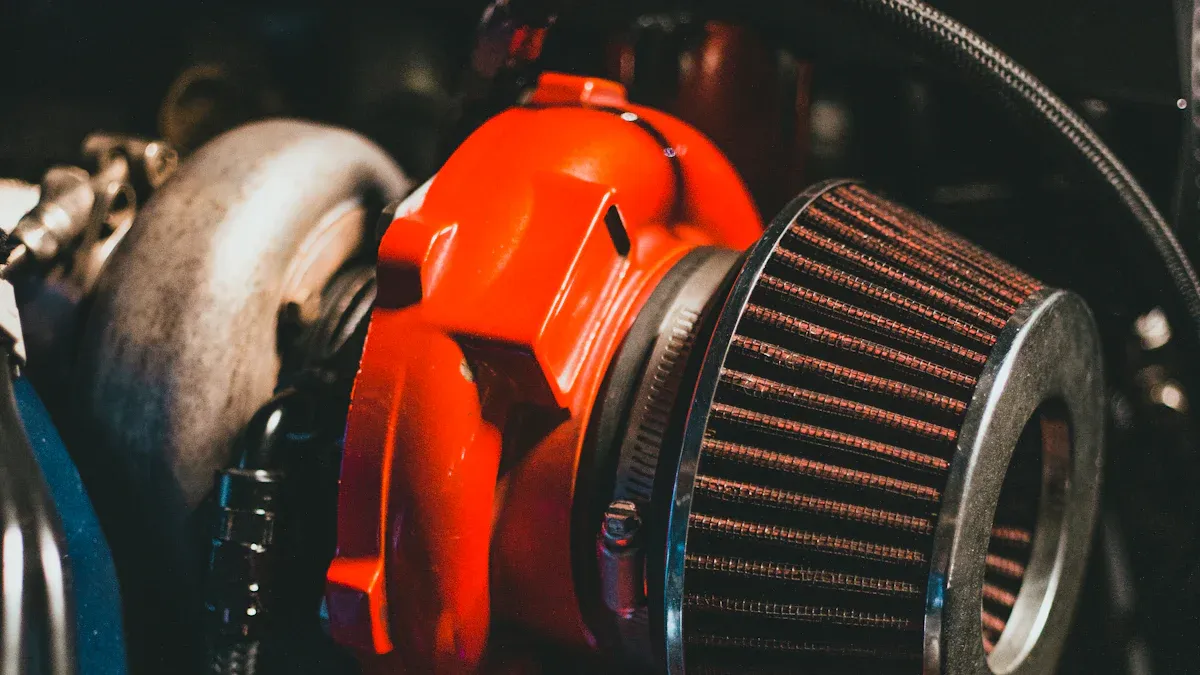
A High Performance Intake Manifold can revolutionize the way an engine breathes by enhancing airflow and ensuring an optimal air-to-fuel ratio, resulting in superior combustion. Many drivers report horsepower gains of 15–20 after making the switch. Whether you’re considering a High Performance Intake Manifold For 5.3 Vortec engines or other models, the improvements are clear. Additionally, the Exhaust Intake Manifold also benefits from this upgrade, as it contributes to a more efficient and smoother-running engine.
Understanding the Role of a High Performance Intake Manifold

How an intake manifold distributes air to the engine
The intake manifold plays a vital role in how an engine breathes. It directs air from the throttle body to the engine’s cylinders, ensuring each one gets the right amount of air for combustion. This even distribution is critical for maintaining engine balance and efficiency.
Here’s how it works:
- The manifold collects air and channels it through a series of runners.
- Each runner delivers air to an individual cylinder.
- Computational fluid dynamics (CFD) studies show that uneven airflow can cause inefficiencies, reducing engine performance.
Modern designs focus on improving airflow without major changes to the manifold’s structure. Engineers also optimize materials to enhance durability and performance.
The impact of airflow on combustion and engine efficiency
Airflow directly affects how well an engine burns fuel. When air enters the cylinders evenly and at the right velocity, it mixes with fuel to create a balanced air-to-fuel ratio. This leads to more efficient combustion, which means:
- Increased power output.
- Reduced fuel consumption.
- Lower emissions.
On the other hand, poor airflow can result in incomplete combustion, wasting fuel and reducing engine efficiency. A High Performance Intake Manifold ensures smoother airflow, helping the engine perform at its best.
Key differences between stock and high-performance intake manifolds
Stock intake manifolds are designed for general use, prioritizing cost and durability over performance. High-performance versions, however, focus on maximizing power and efficiency. Here’s a comparison:
| Intake Type | Peak Power (hp) | Torque (lb-ft) | RPM Range |
|---|---|---|---|
| Stock Intake | N/A | N/A | N/A |
| FAST LSXR Intake | 480.7 | 416.7 | 6,400 (power), 5,600 (torque) |
| Short-Runner Intakes | Higher than stock | Sacrifices torque | High RPM focus |
High-performance manifolds often feature shorter runners for better airflow at higher RPMs, making them ideal for performance-focused drivers.
Benefits of Upgrading to a High Performance Intake Manifold

Increased horsepower and torque for better performance
Upgrading to a high performance intake manifold can significantly boost an engine’s horsepower and torque. This improvement happens because the upgraded manifold allows more air to flow into the engine, enhancing combustion. For example:
- Many enthusiasts report a 10-15 horsepower increase after upgrading the B20 intake manifold.
- Better airflow improves combustion efficiency, which translates to noticeable gains in both horsepower and torque.
- Enhanced power delivery is observed across various RPM ranges, making the vehicle feel more responsive.
These performance gains make the upgrade a favorite among drivers who want their engines to perform at their peak.
Enhanced throttle response and smoother acceleration
A high performance intake manifold doesn’t just add power—it also improves how the engine responds. Drivers often notice quicker throttle response and smoother acceleration. This is because the manifold optimizes airflow, ensuring the engine gets the air it needs without delay. Whether merging onto a highway or navigating city streets, the improved responsiveness makes driving more enjoyable.
Improved fuel efficiency through optimized air-fuel mixture
Fuel efficiency is another major benefit of upgrading. A well-designed intake manifold ensures the engine receives the right amount of air at the right time, leading to a more balanced air-fuel mixture. This optimization allows the engine to burn fuel more effectively, reducing waste. Studies show that:
- Improved airflow leads to better fuel atomization, which enhances combustion.
- Upgraded systems reduce emissions by ensuring more complete fuel burning.
By upgrading the intake manifold, drivers can enjoy better mileage while reducing their environmental impact.
Prolonged engine life by reducing strain on components
A high performance intake manifold doesn’t just improve power and efficiency—it also helps the engine last longer. By delivering air more evenly and efficiently, the manifold reduces strain on critical components like pistons and valves. This means fewer wear-and-tear issues over time. Additionally, smoother airflow minimizes the risk of hotspots in the engine, which can lead to damage. For drivers, this translates to fewer repairs and a more reliable vehicle.
Addressing Concerns About Upgrading
Is the investment worth it? Evaluating cost vs. performance gains
Upgrading to a high-performance intake manifold can feel like a big financial decision. Many drivers wonder if the benefits justify the cost. The answer often depends on the specific manifold and the driver’s goals. For instance:
- The Arrington 6.1 HEMI Intake Manifold offers long-term perks like better acceleration and improved fuel economy. These gains can make the initial expense worthwhile.
- With the Mazdaspeed 3 intake manifold, some options may cost more but deliver significant performance boosts. Budget-friendly alternatives exist, though they may offer more modest improvements.
Ultimately, the investment pays off for those seeking better performance and driving satisfaction. Drivers should weigh their priorities and choose a manifold that aligns with their needs.
Installation challenges: DIY vs. professional installation
Installing a high-performance intake manifold can be tricky. While some car enthusiasts prefer the DIY route, others opt for professional help. Both approaches come with challenges:
- Fitment issues are common, with nearly 35% of aftermarket part returns linked to improper installation.
- DIY installers need technical knowledge, proper tools, and patience. Mocking up assemblies before installation and using alignment tools can help avoid mistakes.
- Professional installers often have the expertise to handle complex setups, but their services can add to the overall cost.
Drivers should consider their skill level and the complexity of the manifold before deciding. For those new to car modifications, professional installation might be the safer choice.
Potential drawbacks and how to mitigate them
Upgrading an intake manifold isn’t without risks. However, understanding potential drawbacks can help drivers avoid issues:
- Some manifolds may not fit perfectly, leading to performance problems. Choosing a model designed specifically for the vehicle can prevent this.
- Poor installation can cause air leaks or uneven airflow. Ensuring proper alignment and sealing during installation minimizes these risks.
- High-performance manifolds may prioritize power over low-end torque, which could affect daily driving. Drivers should research manifolds that balance both needs.
By addressing these concerns early, drivers can enjoy the benefits of their upgrade without unnecessary headaches.
A high performance intake manifold offers a practical way to enhance engine efficiency and driving satisfaction. It delivers noticeable power gains, smoother acceleration, and improved fuel economy.
Richard Holdener’s testing highlights the potential of these upgrades. His data shows a 24 hp increase on a 5.3L engine with a 6.0 LS intake manifold, especially at higher RPMs.
To maximize results, drivers should:
- Match the intake manifold’s RPM range with the camshaft’s range.
- Ensure compatibility with other engine components.
Researching options and consulting professionals ensures the best fit for your vehicle.
FAQ
What is the best intake manifold for daily driving?
The best intake manifold depends on the engine and driving style. For daily driving, choose one that balances low-end torque and high-end power.
Can upgrading the intake manifold void a vehicle’s warranty?
Yes, it might. Some manufacturers consider modifications as warranty violations. Check the warranty terms or consult the dealership before upgrading.
How long does it take to install a high-performance intake manifold?
Professional installation usually takes 2-4 hours. DIY installation might take longer, depending on experience and tools available.
Post time: Apr-07-2025



